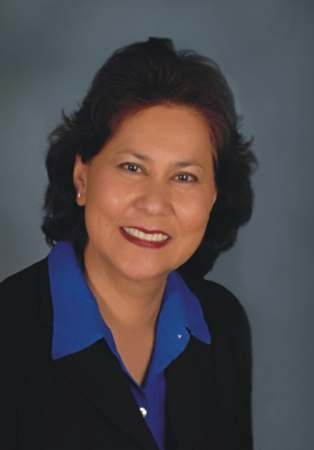Lynn M Koch
age ~67
from Fresno, CA
- Also known as:
-
- Lynn Marie Koch
- Lynn A Koch
- Lynn C Koch
- Raymond J Koch
Lynn Koch Phones & Addresses
- Fresno, CA
- 2112 Harrison Rd, Tucson, AZ 85748 • (520)8853012
- Pinetop, AZ
- Vail, AZ
- Redlands, CA
- 3152 E Santa Ana Ave, Fresno, CA 93726
Medicine Doctors

Lynn J. Koch
view sourceSpecialties:
Internal Medicine
Work:
Fairview Physician AssociatesFairview Clinic Burnsville
303 E Nicollet Blvd STE 100, Burnsville, MN 55337
(952)4604000 (phone), (952)4604120 (fax)
303 E Nicollet Blvd STE 100, Burnsville, MN 55337
(952)4604000 (phone), (952)4604120 (fax)
Education:
Medical School
University of Minnesota Medical School at Minneapolis
Graduated: 1987
University of Minnesota Medical School at Minneapolis
Graduated: 1987
Procedures:
Arthrocentesis
Electrocardiogram (EKG or ECG)
Pulmonary Function Tests
Vaccine Administration
Electrocardiogram (EKG or ECG)
Pulmonary Function Tests
Vaccine Administration
Conditions:
Bronchial Asthma
Diabetes Mellitus (DM)
Disorders of Lipoid Metabolism
Gastroesophageal Reflux Disease (GERD)
Hypertension (HTN)
Diabetes Mellitus (DM)
Disorders of Lipoid Metabolism
Gastroesophageal Reflux Disease (GERD)
Hypertension (HTN)
Languages:
English
Spanish
Spanish
Description:
Dr. Koch graduated from the University of Minnesota Medical School at Minneapolis in 1987. She works in Burnsville, MN and specializes in Internal Medicine. Dr. Koch is affiliated with Fairview Ridges Hospital and Fairview Southdale Hospital.
Isbn (Books And Publications)

Emerging Issues in Rehabilitation Counseling: Perspectives on the New Millennium
view sourceAuthor
Lynn C. Koch
ISBN #
0398072345

Emerging Issues in Rehabilitation Counseling: Perspectives on the New Millennium
view sourceAuthor
Lynn C. Koch
ISBN #
0398072337
Us Patents
-
System And Method For Estimating Transition Costs
view source -
US Patent:20070027822, Feb 1, 2007
-
Filed:Jul 26, 2005
-
Appl. No.:11/189935
-
Inventors:Randy Johnson - O'Fallon MO, US
Lynn Koch - Tucson AZ, US
Tedrick Northway - Wood River IL, US
David Romero - Longmont CO, US -
International Classification:G06F 17/00
-
US Classification:705400000
-
Abstract:A transition costing program (TCP) uses standardized activity tasks (SAT), standard activity estimates (SAE) for each SAT, a transition costing estimator (TCE) to develop full time equivalent (FTE) values for transitioning a customer. The TCP functions in an engagement phase, a boarding phase, and end cost variance (ECV) analysis phase so that feedback is provided to validate or modify the SAE. In the engagement phase, the TCP selects the activities necessary to transition the customer from an SAT library and enters the SAT selections into the TCE. As the SAT selections are entered, the TCE populates a display with corresponding SAE value for each task. During transition, costs are monitored by SAE, the transition is completed and the actual costs for each task are compared with the SAE value for each SAT. When the comparison shows a variance, the TCP analyzes the variance and determines whether to modify the SAE value for the SAT under review.
-
Identifying Optimal Virtual Machine Images In A Networked Computing Environment
view source -
US Patent:20120284380, Nov 8, 2012
-
Filed:May 3, 2011
-
Appl. No.:13/099399
-
Inventors:Jason L. Anderson - Milpitas CA, US
Gregory J. Boss - Saginaw MI, US
Timothy R. Echtenkamp - Lincoln NE, US
Daniel E. Jemiolo - Chapel Hill NC, US
Lynn M. Koch - Tucson AZ, US -
Assignee:INTERNATIONAL BUSINESS MACHINES CORPORATION - Armonk NY
-
International Classification:G06F 15/173
-
US Classification:709223
-
Abstract:Embodiments of the present invention provide an approach for identifying optimal virtual machine (VM) images in a networked computing environment (e.g., a cloud computing environment). Specifically, in a typical embodiment, a set of system requirements, a profile, and a performance state of the networked computing environment are received as input and analyzed against a library of VM images. Based on the analysis, a set of VM images having software programs (e.g., also referred to herein as a software stack) capable of accommodating requirements defined by the input is identified. A requester can select one or more of the identified VM images, which can then be provisioned/deployed accordingly.
-
Forecasting Capacity Available For Processing Workloads In A Networked Computing Environment
view source -
US Patent:20120324092, Dec 20, 2012
-
Filed:Jun 14, 2011
-
Appl. No.:13/159516
-
Inventors:Gene L. Brown - Durham CT, US
Brendan F. Coffey - Rhinebeck NY, US
Christopher J. Dawson - Arlington VA, US
Clifford V. Harris - Saugerties NY, US
Lynn M. Koch - Tucson AZ, US -
Assignee:INTERNATIONAL BUSINESS MACHINES CORPORATION - Armonk NY
-
International Classification:G06F 15/173
-
US Classification:709224
-
Abstract:Embodiments of the present invention provide an approach for forecasting a capacity available for processing a workload in a networked computing environment (e.g., a cloud computing environment). Specifically, aspects of the present invention provide service availability for cloud subscribers by forecasting the capacity available for running or scheduled applications in a networked computing environment. In one embodiment, capacity data may be collected and analyzed in real-time from a set of cloud service providers and/or peer cloud-based systems. In order to further increase forecast accuracy, historical data and forecast output may be post-processed. Data may be post-processed in a substantially continuous manner so as to assess the accuracy of previous forecasts. By factoring in actual capacity data collected after a forecast, and taking into account applications requirements as well as other factors, substantially continuous calibration of the algorithm can occur so as to improve the accuracy of future forecasts and enable functioning in a self-learning (e.g., heuristic) mode.
-
Forecasting Capacity Available For Processing Workloads In A Networked Computing Environment
view source -
US Patent:20140317283, Oct 23, 2014
-
Filed:Jul 2, 2014
-
Appl. No.:14/322266
-
Inventors:- Armonk NY, US
Brendan F. Coffey - Rhinebeck NY, US
Christopher J. Dawson - Arlington VA, US
Clifford V. Harris - Saugerties NY, US
Lynn M. Koch - Tucson AZ, US -
International Classification:G06F 9/50
H04L 12/24 -
US Classification:709224
-
Abstract:Embodiments of the present invention provide an approach for forecasting a capacity available for processing a workload in a networked computing environment (e.g., a cloud computing environment). Specifically, aspects of the present invention provide service availability for cloud subscribers by forecasting the capacity available for running or scheduled applications in a networked computing environment. In one embodiment, capacity data may be collected and analyzed in real-time from a set of cloud service providers and/or peer cloud-based systems. In order to further increase forecast accuracy, historical data and forecast output may be post-processed. Data may be post-processed in a substantially continuous manner so as to assess the accuracy of previous forecasts. By factoring in actual capacity data collected after a forecast, and taking into account applications requirements as well as other factors, substantially continuous calibration of the algorithm can occur so as to improve the accuracy of future forecasts and enable functioning in a self-learning (e.g., heuristic) mode.
Flickr

Shelly Lynn Koch Bea
view sourceFriends:
Shawn Leedy, Barry Hass, Cathy Miller, Susan Garrett, Shannon Stankinas
Shelly Lynn Koch -Bea

Dna Lynn Koch
view sourceFriends:
Rose Throssell, April Connolly, Susan Mealing, Brent Lucas, Judy Hameluck
Donna Lynn Koch

Lynn Koch
view sourceFriends:
Leslie Henning, Diana DeSimone, Larry Mallis, Joe Matheson, Shawn Borden

Lynn Venable Koch
view sourceFriends:
Shannon Addison, Elaine Venable Stapleton, Paula Orlando, Rachel Campbell

Lynne Koch
view sourceFriends:
Maggie Greenwood, Amanda Lafrance, Michael Heck, Michelle Fraser

Lynn Koch Bedell
view sourceFriends:
Elaine Carey, Denise Russell, Richard Santia, Paul Pilof

Sarah Lynn Koch McBride
view sourceFriends:
Stacy Ingram, Elyse McBride, Dana Mclendon, Wendy Herbst Cyrier, Jackie Young

Jessica Lynn Koch
view sourceFriends:
Justin M. Tripp, Matt Tackett, Kristen Kline, Bryan Fumo
Classmates

Lynn Koch (Bembeneck)
view sourceSchools:
Glenn Loomis Elementary School Traverse City MI 1969-1970, Immaculate Conception School Traverse City MI 1970-1976, Traverse City West Junior High School Traverse City MI 1976-1979
Community:
Paulette Poe, Tammy Galloway, Arnie Crawford

Lynn Koch (Robertson)
view sourceSchools:
Bay Head Elementary School Bay Head NJ 1972-1976
Community:
Katherine Woodworth, Catsi Bywaters, Gary Hoffman, Sherry Smith, Tim Kissane

Lynn Mull (Koch)
view sourceSchools:
Schuylkill Haven High School Schuylkill Haven PA 1989-1993
Community:
Susan Runaldue, David Breon, Roxanne Bachman

Lynn Koch
view sourceSchools:
Lowell Middle School Canton MI 1984-1987, Seoul International School Seoul MD 1987-1991
Community:
Annette Fulton

Lynn Koch
view sourceSchools:
Parkway Central High School Chesterfield MO 1975-1979
Community:
Monica Cooper, Lisa Kribs, Melissa Duba, Amy Zellinger, Mark Elberg

Lynn Harris (Koch)
view sourceSchools:
Martin Luther High School Maspeth NY 1964-1968
Community:
Rob West

Lynn Koch
view sourceSchools:
Pearl City High School Pearl City IL 1978-1982
Community:
Luis Lopez, Laura Bryant, Robert Murph, Louann Klentz, John Keltner, Randy Anderson, Lee Block, Jill Hansen, Kimberly Schultz, Kevin Morrow, Stacy Kuhlmyer

Find people: Lynn Koch | ...
view sourceYoutube
Googleplus

Lynn Koch

Lynn Koch

Lynn Koch
Work:
IBM
Plaxo

Lynn Koch
view sourceOffice Supervisor at TruGreen
Get Report for Lynn M Koch from Fresno, CA, age ~67













